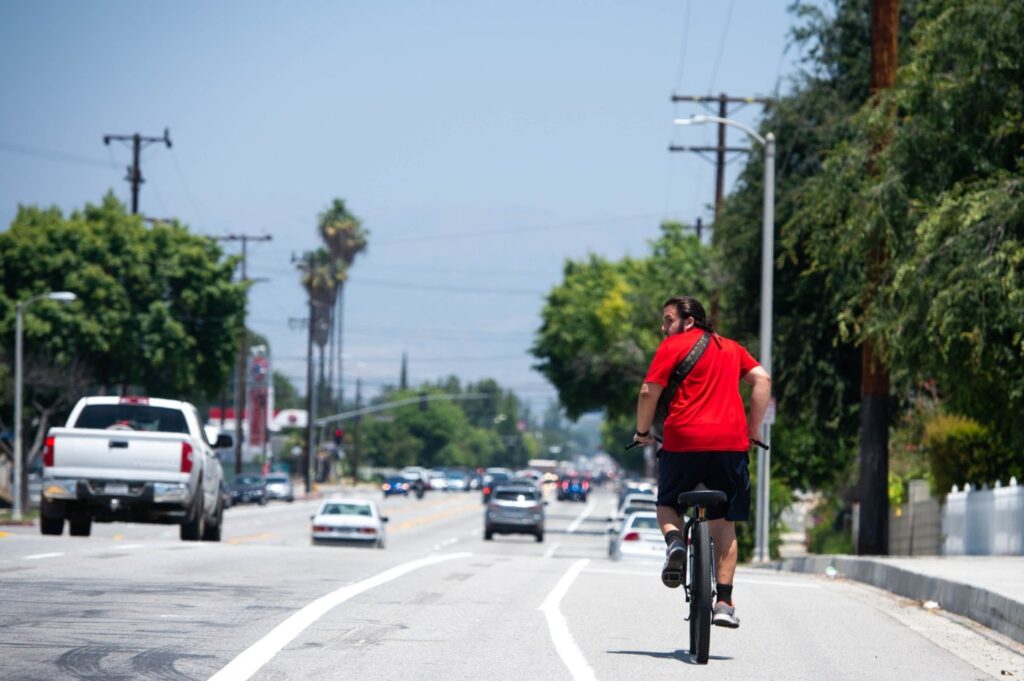
Q: Gabriel Vera of La Verne said his city has bike lanes separated by a solid white line from the regular motor vehicle traffic lanes, much like other cities. Vera noted that drivers of motor vehicles are driving into the bike lanes to make right turns, crossing over the solid white line. He said drivers are using bike lanes to make right turns and said he’s been in three near-accidents because of this. He asked On the Road to help.
A: It’s legal for cars to make a right turn from the bike lane. California Vehicle Code section 21209 says, “No person shall drive a motor vehicle in a bicycle lane established on a roadway pursuant to Section 21207 except as follows: (1) To park where parking is permitted. (2) To enter or leave the roadway. (3) To prepare for a turn within a distance of 200 feet from the intersection.” In addition, the Department of Motor Vehicles says in its driving instructions:
“A bicycle lane is a designated traffic lane for bicyclists. However, motorists must merge into a bicycle lane when making right turns. These lanes are marked by a solid white line, which becomes a dotted line ending before it reaches the corner.”
We confirmed that this is indeed legal with Gabriel Salas, La Verne’s traffic officer, who emphasized that the cars have 200 feet to get into the bike lane to make the right turn and they must watch for bicyclists. If our reader has had three near-accidents over this, it’s likely that the drivers involved were not being careful or looking.
Q: Gary Ward of Temecula said the GPS navigation system in his car displays the posted speed limit of a street. He asked where the information comes from and who is responsible for updating it when speed limits are changed on roads and highways. “Several streets in my city have seen the posted speed limit changed, some up and some down, but these changes are not reflected when navigation system software is updated,” Ward said.
A: Information displayed in vehicle GPS systems can quickly become outdated, as our reader highlighted. Ward should ask the dealership where he purchased the car, or better yet, the manufacturer of his car, for details about its GPS system and how to get updates for the navigation system. GPS systems in vehicles vary. Some update automatically but others may have to be updated manually.
On this topic, here is an important piece of advice from California Highway Patrol Officer Dan Olivas of the CHP Inland Division: as a driver, you are responsible for driving the speed limit and you should not rely on your car’s navigation system or a GPS system to know what it is. Olivas said it’s best to pay attention to posted street signs. If you get a speeding ticket, you’ll be on the hook for it, not your GPS system.
Do you commute to work in the Inland Empire? Spend a lot of time in your vehicle? Have questions about driving, freeways, toll roads or parking? If so, write or call On the Road and we’ll try to answer your questions. Please include your question or issue, name, city of residence, phone number and email address. Write ontheroad@scng.com or call 951-368-9670.
